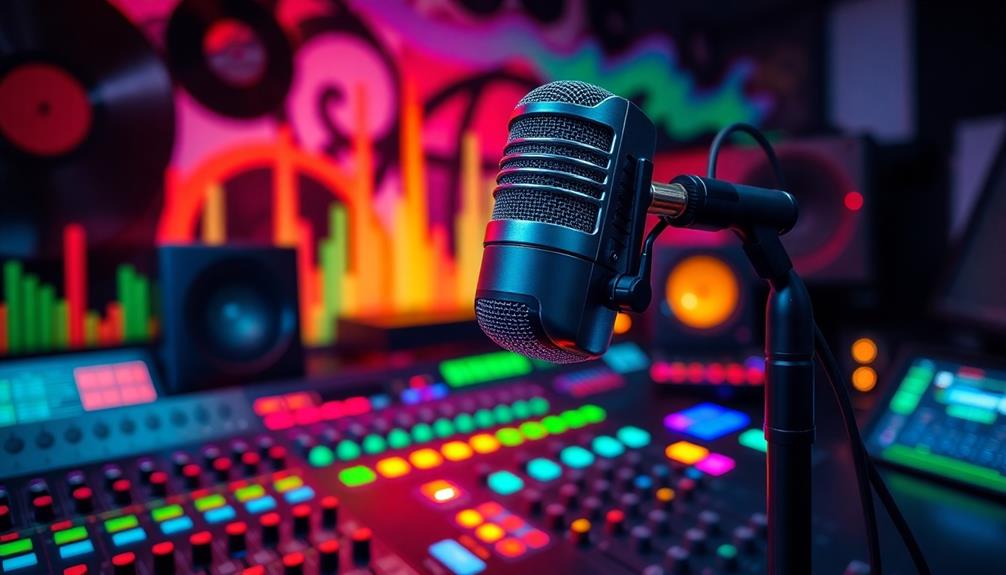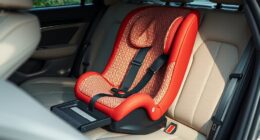Creating movement in your tracks with automation is essential for enthralling your audience. Start by automating volume to enhance dynamics, keeping your mix engaging. Use EQ automation to carve out space and improve clarity among elements. Incorporate reverb and delay automations to craft a sense of depth and perspective. For synths, adjust filter cutoff settings and MIDI velocities to add rich, organic expressions. Don't overlook the importance of LFOs for rhythmic movement. With practical implementation, you can overcome common challenges in automation to maintain an organized workflow and elevate your sound. If you're curious about advanced techniques, there's more to explore.
Key Takeaways
- Use volume automation to create dynamic shifts that enhance the emotional impact of your track.
- Implement EQ automation to carve out space for elements, improving mix clarity and preventing frequency clashes.
- Automate reverb and delay levels to adjust spatial characteristics, adding depth and richness to your sound.
- Adjust MIDI velocity and filter cutoff settings to introduce variations and warmth, enhancing emotional expression in your music.
- Regularly evaluate and refine automation settings to ensure a cohesive and engaging listening experience throughout your track.
Importance of Movement in Music

Why is movement so fundamental in music? It's the heartbeat that keeps your listeners engaged and emotionally connected. When you incorporate harmonic movement—like chord changes and key shifts—you create an emotional journey that resonates deeply.
Similarly, dynamic changes in volume and EQ are vital. They add layers to your sound design that prevent it from feeling flat or static.
You should also consider how automation plays a significant role in enhancing movement. By implementing real-time adjustments, you mimic the nuances of human performance, making your tracks come alive. For instance, using automation for effects like reverb and delay can dramatically alter the spatial characteristics of your mix, transforming the listener's experience.
As you craft your music, remember that it's the ebb and flow of these elements—harmonic shifts, dynamic changes, and automated effects—that create an engaging narrative.
Essential Automation Techniques
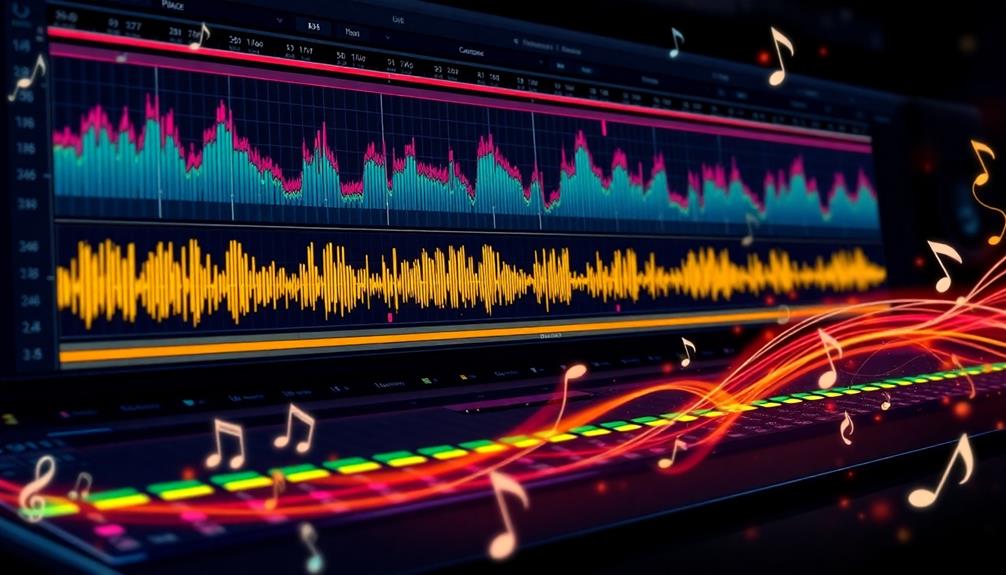
Automation techniques are essential for creating dynamic and engaging tracks. One of the most effective methods is volume automation. By adjusting levels throughout different sections, you can enhance song dynamics and create movement that keeps listeners invested.
Likewise, EQ automation allows you to make frequency-specific adjustments, preventing muddiness and enhancing clarity in your mix. This helps you create space for each element, ensuring everything shines through.
Don't overlook automating reverb send levels. This dynamic adjustment alters the listener's perspective, contributing considerably to the depth and immersion of your mix.
Additionally, applying subtle automation to filter cutoff can transform synth sounds. Warm tones at low settings can shift to brighter sounds as you increase the cutoff, adding richness to your tracks.
Enhancing MIDI and Synth Expressions

Often, enhancing MIDI and synth expressions can make a significant difference in your tracks. Start by editing MIDI velocity; slight adjustments can create dynamic variations that deeply impact the emotional expression of your performance. Using automation to modify velocity within your MIDI tracks will help you avoid the mechanical feel of static values, allowing for a more natural and engaging sound.
Next, focus on the filter cutoff in your synth programming. Low cutoff settings yield warmer tones, while higher settings create brighter sounds. This dynamic control plays a fundamental role in shaping your electronic music.
Additionally, incorporating LFOs (Low-Frequency Oscillators) can introduce rhythmic movement and sweeping effects, enhancing expressiveness and adding warmth reminiscent of classic analog synthesizers.
Mastering ADSR (Attack, Decay, Sustain, Release) envelopes is essential for crafting sounds with the character and dynamics you desire. By adjusting these parameters, you can create more organic and enthralling musical expressions.
Practical Automation Implementation
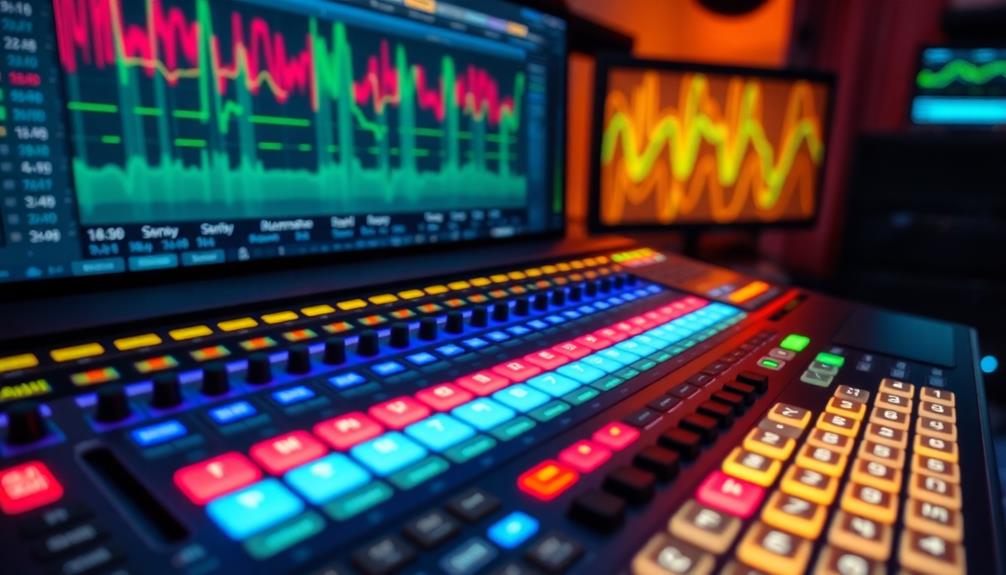
Incorporating practical automation techniques can further enhance the movement and dynamics of your tracks. Start by utilizing volume automation to boost the clarity and presence of your main vocal lines, guaranteeing they cut through the mix. Next, consider EQ automation to make frequency-specific adjustments. This helps carve out space for various elements, allowing them to shine without clashing.
Here's a quick reference table to streamline your automation moves:
| Automation Type | Purpose | Best Practice |
|---|---|---|
| Volume Automation | Enhance dynamics and vocal presence | Use gain/utility plugins for precision |
| EQ Automation | Create clarity in the mix | Adjust frequencies dynamically |
| Effects Automation | Manage reverb/delay levels for clarity | Regularly evaluate for emotional impact |
Don't forget to automate effects like reverb and delay to enrich the spatial feel of your mix without causing muddiness. By regularly evaluating your automation settings, you can guarantee they enhance the track's emotional depth rather than distract. Experiment, make subtle adjustments, and watch your tracks come alive with movement!
Addressing Automation Movement Challenges
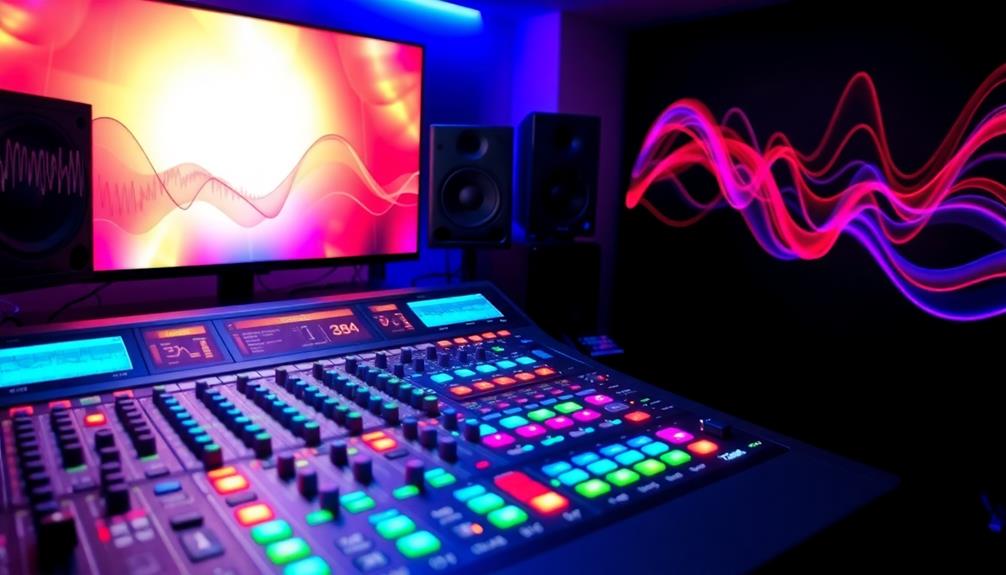
Managing automation in your digital audio workstation (DAW) can feel like maneuvering through a maze, especially when movement challenges arise. One common issue is that volume automation often doesn't move with regions when you drag them, requiring you to adjust automation markers manually afterward. This can be frustrating, but it's something you need to know to stay organized.
In Logic, the lack of a straightforward mass selection method for global tracks can make managing automation lanes cumbersome. You might find yourself using the marquee tool as a workaround to select multiple automation markers.
Additionally, tempo changes can create gaps between audio regions if Flex and follow settings aren't turned off, complicating your arrangement.
When dealing with sum track automation, you may notice it doesn't follow individual region movements, leading to further complications. To streamline the process of moving automation, utilize shortcuts like control+command drag to select multiple automation markers efficiently.
Creating empty regions on sum tracks can also help keep everything aligned and organized, ensuring your automation maintains its original position throughout your project.
Frequently Asked Questions
How Do I Add Movement to a Track?
To add movement to your track, try varying the dynamics, experimenting with panning, and adjusting frequency balances. Incorporate effects like reverb or filters to create depth and enhance the emotional journey of your music.
How to Move Automation With Tracks in Logic?
"Where there's a will, there's a way." To move automation with tracks in Logic, guarantee "Automation follows events" is checked, use Ctrl+U to group, or select markers with the marquee tool for easy adjustments.
How to Move Automation With Tracks in Garageband?
To move automation with tracks in GarageBand, you'll need to manually adjust the automation points. Use the "Copy" and "Paste" functions or "Select All" to guarantee everything stays synchronized when shifting your audio regions.
How Can Automation Be Employed to Add Movement and Dynamics to Drum Tracks?
You can use automation to adjust volume, reverb, and compression on your drum tracks. By dynamically changing these elements, you'll create energy, enhance depth, and make your beats feel more alive and engaging for listeners.
Conclusion
Just like a painter brings a canvas to life with every brushstroke, your music thrives on movement. By harnessing automation, you're not just adding layers; you're crafting a dynamic landscape that captivates listeners. Embrace the tools at your fingertips, and let your creativity flow like a river, winding through peaks and valleys. Remember, every note can dance, and every silence can breathe—make your track a vivid journey that keeps your audience coming back for more.





